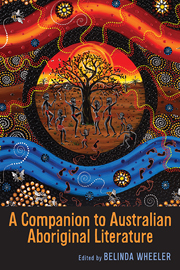52 results
Health and Welfare of Captive Reptiles Edited by Clifford Warwick, Fredric L Frye and James B Murphy (1995). Chapman & Hall: London. 299 pp. Hardback. Obtainable from the publishers, 18 Anley Road, London W14 OBY, UK (ISBN 1 873580 16 9). Price £45.
-
- Journal:
- Animal Welfare / Volume 5 / Issue 1 / February 1996
- Published online by Cambridge University Press:
- 11 January 2023, pp. 93-95
-
- Article
- Export citation
Pulmonary artery banding: still a role for staged bi-ventricular repair of intracardiac shunts?
-
- Journal:
- Cardiology in the Young / Volume 33 / Issue 9 / September 2023
- Published online by Cambridge University Press:
- 14 September 2022, pp. 1627-1633
-
- Article
- Export citation
Beaker and Early Bronze Age Tin Exploitation in Cornwall: Cassiterite Processing Identified through Microwear and pXRF Analyses
-
- Journal:
- European Journal of Archaeology / Volume 26 / Issue 2 / May 2023
- Published online by Cambridge University Press:
- 30 August 2022, pp. 147-167
- Print publication:
- May 2023
-
- Article
-
- You have access
- Open access
- HTML
- Export citation
Pre-Hispanic anthropogenic wetlands in the upper Ica drainage, south-central Andes: dating and context
-
- Article
-
- You have access
- Open access
- HTML
- Export citation
Characterisation of age and polarity at onset in bipolar disorder
-
- Journal:
- The British Journal of Psychiatry / Volume 219 / Issue 6 / December 2021
- Published online by Cambridge University Press:
- 25 August 2021, pp. 659-669
- Print publication:
- December 2021
-
- Article
-
- You have access
- Open access
- HTML
- Export citation
Can composite digital monitoring biomarkers come of age? A framework for utilization
-
- Journal:
- Journal of Clinical and Translational Science / Volume 1 / Issue 6 / December 2017
- Published online by Cambridge University Press:
- 23 April 2018, pp. 373-380
-
- Article
-
- You have access
- Open access
- HTML
- Export citation
Basal conditions of two Transantarctic Mountains outlet glaciers from observation-constrained diagnostic modelling
-
- Journal:
- Journal of Glaciology / Volume 60 / Issue 223 / 2014
- Published online by Cambridge University Press:
- 10 July 2017, pp. 855-866
-
- Article
-
- You have access
- HTML
- Export citation
7 - Public Prosecutor v Oie Hee Koi (1968): Not So Humbly Advising? Sir Garfield Barwick and the Introduction of Dissenting Reasons to the Judicial Committee of the Privy Council
-
-
- Book:
- Great Australian Dissents
- Published online:
- 20 October 2016
- Print publication:
- 08 September 2016, pp 116-130
-
- Chapter
- Export citation
Contributors
-
-
- Book:
- Systems Biology of Cancer
- Published online:
- 05 April 2015
- Print publication:
- 09 April 2015, pp ix-xiv
-
- Chapter
- Export citation
Relationship between obesity and the risk of clinically significant depression: Mendelian randomisation study
-
- Journal:
- The British Journal of Psychiatry / Volume 205 / Issue 1 / July 2014
- Published online by Cambridge University Press:
- 02 January 2018, pp. 24-28
- Print publication:
- July 2014
-
- Article
-
- You have access
- HTML
- Export citation
Notes on contributors
-
-
- Book:
- Moving Shakespeare Indoors
- Published online:
- 05 March 2014
- Print publication:
- 06 March 2014, pp x-xii
-
- Chapter
- Export citation
Chapter 3 - Documentary evidence for an indoor Jacobean theatre
- from Part I - The context of hard evidence
-
-
- Book:
- Moving Shakespeare Indoors
- Published online:
- 05 March 2014
- Print publication:
- 06 March 2014, pp 65-78
-
- Chapter
- Export citation
4 - A worthy predecessor? The Privy Council on appeal from Hong Kong, 1853 to 1997
- from Part I - Final appeals
-
-
- Book:
- Hong Kong's Court of Final Appeal
- Published online:
- 05 December 2013
- Print publication:
- 12 December 2013, pp 94-118
-
- Chapter
- Export citation
Contributors
-
-
- Book:
- Hong Kong's Court of Final Appeal
- Published online:
- 05 December 2013
- Print publication:
- 12 December 2013, pp xi-xii
-
- Chapter
- Export citation

A Companion to Australian Aboriginal Literature
-
- Published by:
- Boydell & Brewer
- Published online:
- 05 September 2013
- Print publication:
- 01 August 2013
1 - Indigenous Life Writing: Rethinking Poetics and Practice
-
- Book:
- A Companion to Australian Aboriginal Literature
- Published by:
- Boydell & Brewer
- Published online:
- 05 September 2013
- Print publication:
- 01 August 2013, pp 15-34
-
- Chapter
- Export citation
8 - White Shadows: The Gothic Tradition in Australian Aboriginal Literature
-
- Book:
- A Companion to Australian Aboriginal Literature
- Published by:
- Boydell & Brewer
- Published online:
- 05 September 2013
- Print publication:
- 01 August 2013, pp 139-154
-
- Chapter
- Export citation
Contents
-
- Book:
- A Companion to Australian Aboriginal Literature
- Published by:
- Boydell & Brewer
- Published online:
- 05 September 2013
- Print publication:
- 01 August 2013, pp v-vi
-
- Chapter
- Export citation
Index
-
- Book:
- A Companion to Australian Aboriginal Literature
- Published by:
- Boydell & Brewer
- Published online:
- 05 September 2013
- Print publication:
- 01 August 2013, pp 207-216
-
- Chapter
- Export citation
Notes on the Contributors
-
- Book:
- A Companion to Australian Aboriginal Literature
- Published by:
- Boydell & Brewer
- Published online:
- 05 September 2013
- Print publication:
- 01 August 2013, pp 203-206
-
- Chapter
- Export citation



